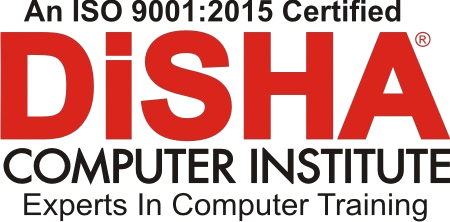
Here is a detailed AI & ML syllabus covering the fundamentals to advanced concepts, designed to provide a comprehensive understanding of Artificial Intelligence and Machine Learning:
- Introduction to Artificial Intelligence
- What is AI? Definitions and Scope
- History and Evolution of AI
- Applications of AI in Various Domains
- Types of AI: Narrow AI, General AI, Super AI
- Ethics and Challenges in AI
- Mathematics for AI and ML
- Linear Algebra
- Vectors, Matrices, and Operations
- Eigenvalues and Eigenvectors
- Probability and Statistics
- Random Variables, Distributions, Bayes’ Theorem
- Descriptive and Inferential Statistics
- Calculus
- Derivatives and Gradients
- Optimization Techniques
- Graph Theory (optional for advanced learners)
- Programming Foundations
- Introduction to Python for AI/ML
- Data Types, Functions, and Libraries
- Libraries for AI/ML: NumPy, Pandas, Matplotlib, Seaborn
- Basics of R Programming (optional)
- Code Versioning with Git/GitHub
- Machine Learning Foundations
- What is Machine Learning?
- Types of ML:
- Supervised Learning
- Unsupervised Learning
- Reinforcement Learning
- ML Workflow: Problem Framing, Data Collection, Preprocessing, Model Building
- Data Preprocessing and Feature Engineering
- Handling Missing Data
- Data Cleaning and Transformation
- Feature Scaling and Normalization
- Encoding Categorical Variables
- Feature Selection and Dimensionality Reduction (e.g., PCA)
- Supervised Learning
- Regression Models:
- Linear Regression
- Polynomial Regression
- Ridge and Lasso Regression
- Classification Models:
- Logistic Regression
- Decision Trees and Random Forest
- Support Vector Machines (SVM)
- k-Nearest Neighbors (k-NN)
- Unsupervised Learning
- Clustering Algorithms:
- k-Means Clustering
- Hierarchical Clustering
- DBSCAN
- Dimensionality Reduction:
- Principal Component Analysis (PCA)
- t-SNE
- Neural Networks and Deep Learning
- Introduction to Neural Networks
- Perceptron Model
- Activation Functions
- Feedforward Neural Networks
- Backpropagation Algorithm
- Introduction to Deep Learning
- Convolutional Neural Networks (CNNs)
- Recurrent Neural Networks (RNNs)
- Long Short-Term Memory (LSTM)
- Frameworks and Libraries: TensorFlow, Keras, PyTorch
- Natural Language Processing (NLP)
- Text Preprocessing: Tokenization, Lemmatization, and Stop Words Removal
- Bag-of-Words and TF-IDF
- Sentiment Analysis
- Word Embeddings: Word2Vec, GloVe
- Sequence Models for NLP: RNNs, LSTMs, Transformers
- Chatbot Development and Text Generation
- Computer Vision
- Basics of Image Processing
- Image Classification with CNNs
- Object Detection Algorithms (YOLO, SSD)
- Image Segmentation Techniques
- Transfer Learning and Pretrained Models (ResNet, VGG, etc.)
- Reinforcement Learning
- Basics of Reinforcement Learning
- Markov Decision Process (MDP)
- Q-Learning and Deep Q-Networks (DQN)
- Applications of RL: Gaming, Robotics
- AI for Real-World Applications
- AI in Healthcare
- AI in Finance
- AI in Autonomous Vehicles
- AI in Smart Cities
- Advanced Topics
- Generative Adversarial Networks (GANs)
- Explainable AI (XAI)
- Hyperparameter Tuning and Model Optimization
- AI in Edge and IoT Devices
- Ethical AI and Bias Mitigation
- Deployment and Model Serving
- Model Serialization (e.g., Pickle, ONNX)
- Model Deployment Frameworks (Flask, FastAPI)
- Containerization with Docker
- Deployment on Cloud Platforms (AWS, Azure, GCP)
- Capstone Projects
- Building an AI-Powered Recommendation System
- Developing a Real-Time Object Detection App
- Implementing a Sentiment Analysis Tool
- Creating a Predictive Analytics Dashboard
- Certification and Career Support
- Preparing for AI & ML Certifications (e.g., TensorFlow, AWS Machine Learning)
- Resume Building and Interview Preparation
- AI/ML Job Roles: Data Scientist, AI Engineer, ML Developer
For practical training and hands-on experience in AI and ML, consider Disha Computer Institution Hubli, known for its government-approved courses, skilled faculty, and placement support to build a lucrative career in 2025 and beyond.
